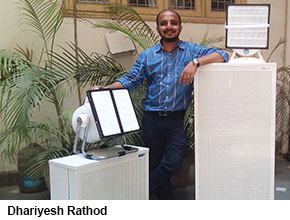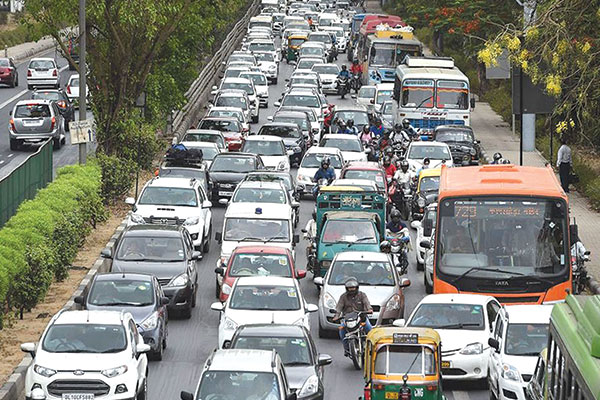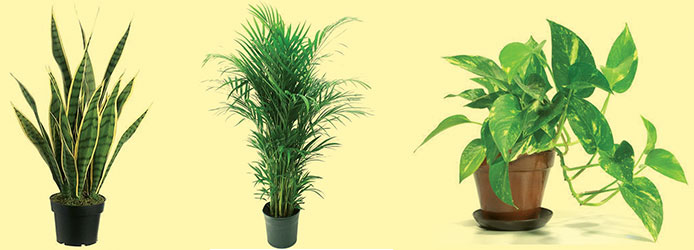Inevitably, although all citizens suffer the ill-effects of poisonous air cover over urban India, the most vulnerable are children. According to a damning State of India’s Environment Report, released earlier this year by the highly-reputed Centre for Science and Environment, Delhi, air pollution kills more than 100,000 children aged below five every year – Mini P, Cynthia John & Parvathy Menon

Since November 1, Delhi — India’s showpiece national capital (pop.19 million) — has been shrouded in a thick blanket of smoke with the air quality plunging to “severe” category levels. The country’s admin capital now has the dubious distinction of being the world’s most polluted city, and India of hosting 14 of the world’s 15 most polluted cities. The situation in India’s 300 cities and towns with more than 100,000 residents, characterised by roads choked with vehicular traffic, air polluting smokestacks, dying water bodies and depleting green cover, is only marginally better. In autumn and winter months, large scale burning of kharif crops stubble in Punjab, Haryana and western Uttar Pradesh — a cheaper alternative to mechanical tilling — generates clouds of smoke heavy with PM10 and PM2.5 particulate matter which are wafted to Delhi and north India’s cities by seasonal winds, creating deadly blankets of smog.
Contemporary India is experiencing a national air pollution emergency with the majority of its cities enveloped by toxic air cover forcing over 140 million citizens to ingest air that is 10x more noxious than the WHO prescribed safe limit (10 μg/m3 for PM2.5 and 20 μg/m3 for PM10). “There are no non-smokers in India. Because of pervasive air pollution countrywide, everybody living in India is a smoker,” says Dr. Arvind Kumar, a prominent chest surgeon and founder of the Lung Care Foundation, Delhi.
Inevitably, although all citizens suffer the ill-effects of poisonous air cover over urban India, the most vulnerable are children. According to a damning State of India’s Environment Report (SIER), released earlier this year by highly-reputed Centre for Science and Environment (CSE), Delhi, air pollution kills more than 100,000 children aged below five every year. SIER highlights that greenhouse gas emissions have risen more than 20 percent between 2010 and 2014 and that 86 percent of India’s water bodies are polluted.
The India chapter of the Global Burden of Disease 2017 Report (GBDR) of US-based Institute for Health Metrics & Evaluation is even more alarming. The report says that 195,546 children in India died in 2017 due to air pollution-related diseases i.e, 535 child deaths per day which translates into a child dying every three minutes because of inhaling toxic air pollutants. GBDR identifies lower respiratory tract infections caused by exposure to air pollutants as the second-major cause of child mortality, after neonatal disorders.
The western state of Rajasthan (pop. 68 million) recorded the maximum number of pollution-related child deaths, with a ratio of 126 mortalities per 100,000 children, followed by Uttar Pradesh (pop. 215 million) and Bihar (100 million). India’s environmentally safest states are Kerala, Tamil Nadu, Goa, Telangana, Andhra Pradesh, Maharashtra and Karnataka.
“India cannot afford to remain complacent or in denial any longer. With so many people dying early and falling ill and losing productive years due to PM10 and PM2.5 particulate matter, we are experiencing a national health emergency. This demands nationwide intervention to ensure sharp reduction of environment pollutants and a roadmap to meet clean air standards,” says Anumita Roychowdhury, executive director, research and advocacy, CSE.
Even as India’s infamous lumbering Central and state governments have been slow to acknowledge — let alone counter — the national environment pollution emergency, medical practitioners and health workers across the country are reporting a huge increase in the number of children suffering lung infections and respiratory problems.
According to Dr. Sanjeev Bagai, a Delhi-based paediatrician, the incidence of asthma in children has spiralled by 40-45 percent during the past five years. “Not too long ago, only children above three-four years of age suffered asthma. Now it’s common for infants and toddlers to be diagnosed with this respiratory disease. Constant inhalation of toxic air severely damages young children’s lungs, and lower oxygen intake because of breathing difficulties can lead to long-term problems with vision, growth and brain development,” warns Bagai.
According to the World Health Organisation (WHO), severe air pollution results in adverse birth outcomes and several fatal childhood diseases. Among them:
After birth diseases. Numerous studies indicate a strong correlation between exposure to ambient air pollution and adverse birth outcomes. For instance, a recent study has highlighted that exposure of pregnant women to PM2.5 particulates increases the risk of preterm birth and low infant birth weight.
Infant mortality. Constant exposure to air pollution increases infant mortality.
Impaired neurodevelopment. Children living in polluted cities report inferior cognitive test outcomes and are at increased risk of developing behavioural disorders such as attention deficit hyperactivity disorder (ADHD). A December 2017 Unicef report highlights that air pollution impacts cognitive development of children leading to reduced verbal and non-verbal IQ, adversely affects memory and test scores as also causes other neurological behavioural problems.
Childhood obesity. Numerous research studies have identified a connection between exposure to toxic air and adverse metabolic outcomes in children including in-utero and postnatal weight gain, childhood obesity, and insulin resistance.
Lung function. There is robust evidence which establishes causal connection between air pollution and children’s lung ailments which impede respiratory growth. Air pollutants also exacerbate childhood asthma.
Childhood cancer. Several studies have found association between prenatal exposure to noxious air pollution and higher risk of retinoblastomas and eukaemia in children.
Even as the Geneva-based Intergovernmental Panel on Climate Change (IPCC, estb.1988) of the World Meteorological Organisation and United Nations is struggling to evolve global solutions to reduce greenhouse gases and other air pollutants which are threatening penetration of the ozone layer that protects Planet Earth from excessive global warming (to contain it to 1.5 percent per annum), the burden of mitigating the adverse effects of environmental pollution and protecting vulnerable children on a day-to-day basis has devolved upon parents and teachers.
 Across the country, medical practitioners and environment experts are advising parents to ensure that children use well-fitting nasal masks when outdoors, travel minimally when pollution levels are at their peak and eat foods rich in proteins and vitamins to boost immunity.
Across the country, medical practitioners and environment experts are advising parents to ensure that children use well-fitting nasal masks when outdoors, travel minimally when pollution levels are at their peak and eat foods rich in proteins and vitamins to boost immunity.
“On days when the index of air pollution is high, I don’t take my children out of the house. I have also changed their daily diet to include immunity-boosting foods such as nuts, egg white and tulsi to help them fight the adverse effects of air pollution,” says Bangalore-based Divya Kotian, homemaker and mother of Sheetal (12) and Shaunak (8).
 Air purifiers, which cleanse the air at home of dust, allergens and particulate matter, are also becoming popular with the middle class. “India’s cities and citizens are choking under the smog of air pollution. Unfortunately, the government is unable to do anything significant to counter this annual winter menace. Therefore, it’s up to families to do whatever best they can to protect themselves and children from increasingly dangerous air pollution,” says Dhariyesh Rathod, Delhi-based India head of Smart Air, a social enterprise that manufactures affordable anti-pollution products.
Air purifiers, which cleanse the air at home of dust, allergens and particulate matter, are also becoming popular with the middle class. “India’s cities and citizens are choking under the smog of air pollution. Unfortunately, the government is unable to do anything significant to counter this annual winter menace. Therefore, it’s up to families to do whatever best they can to protect themselves and children from increasingly dangerous air pollution,” says Dhariyesh Rathod, Delhi-based India head of Smart Air, a social enterprise that manufactures affordable anti-pollution products.
With the lumbering government machinery slow to respond to the environment disaster confronting the nation, socially conscious citizens and NGOs have stepped forward to mitigate unchecked air and environment pollution. Krishna Kumar Suresh, the Chennai-based founder of Thuvakkam (‘beginning’), a social enterprise that helps people to “plant forests in urban and semi-urban areas”, is one of a new genre of green crusaders. He believes the most effective and simplest way to reduce air pollution is to plant trees which absorb carbon dioxide emissions, and release oxygen. “A massive planting drive on public roads and land will not only lower air pollution but also reduce noise,” he says. “In Thuvakkam, we help to grow mini forests in government and private schools. For instance, we have created 500-1,000 sq. ft forests, planting 100-150 saplings in several schools in Chennai. Trees block out noise and reduce air pollution, and also inculcate love of nature within children and promote the cause of environment conservation,” says Suresh.
 According to Suresh, there are many other “small ways” in which families can reduce air pollution. “Petrol and diesel fuel used in motor cars are major environment pollutants and release substantial fine PM2 particulate matter into the air which causes severe damage to the lungs of children and elderly. Therefore, thousands of cars on the streets emitting PM2 are major polluters. In these circumstances, consciously carpool, use public transport, cycle or walk whenever possible. It’s also time to switch to environmentally safe paints and cleaning products; to mulch or compost kitchen waste and garden leaves; avoid excessive idling of motor vehicles and buy home and office products with the Energy Star label,” he advises.
According to Suresh, there are many other “small ways” in which families can reduce air pollution. “Petrol and diesel fuel used in motor cars are major environment pollutants and release substantial fine PM2 particulate matter into the air which causes severe damage to the lungs of children and elderly. Therefore, thousands of cars on the streets emitting PM2 are major polluters. In these circumstances, consciously carpool, use public transport, cycle or walk whenever possible. It’s also time to switch to environmentally safe paints and cleaning products; to mulch or compost kitchen waste and garden leaves; avoid excessive idling of motor vehicles and buy home and office products with the Energy Star label,” he advises.
Yet while nasal masks, immunity-boosting foods and plant life counter the nasty effects of environment pollution, healthcare experts believe that concerted public and government action is required to find lasting solutions to this problem which is threatening the health and well-being of future generations.
Major air POLLUTANTS

In urban settings, the main environment pollutants are fossil fuels used for power generation, vehicular transport, residential cooking, heating and waste incineration. On the other hand, rural communities suffer air pollution emitted primarily on account of household burning of kerosene, biomass coal usage for cooking, heating and lighting and incineration of agriculture waste particularly stubble.
Indoor air pollutants include volatile organic compounds from household products and building supplies, asbestos, pesticides, mercury (e.g, from broken thermometers), radon and biological pollutants.
Tobacco smoke is another significant source of indoor air pollution and a health risk to children.
(Source: WHO 2018)
5 indoor plants to combat air pollution

Increasingly, many educated households in Delhi and the metros are installing air purifiers in their homes. Yet, a cheaper and arguably more effective option to reduce toxins in the air is to plant trees and shrubs. They reduce carbon dioxide levels, increase humidity, mitigate the impact of pollutants such as benzene and nitrogen dioxide, and absorb airborne dust.
According to researchers at IIT-Kanpur, the Top 5 indoor plants to fight household air pollution are areca palm, mother-in-law’s tongue, golden pothos, chrysanthemum (guldudi) and the money plant.
Areca Palm (chrysalidocarpus lutescens). It needs exposure to the sun once in three months. Make sure you clean the leaves every day. Best kept in the living room.
Mother-In-Law’s Tongue (sansevieria trifasciata). This plant converts carbon dioxide into oxygen at night; best kept in bedrooms.
Golden Pothos (scindapsus aures). This plant grows in the glow of tubelights and fights indoor pollutants.
Chrysanthemum. Great for combating benzene and ammonia. Needs sunlight to bloom, so place it in a room which gets maximum natural sunlight.
Money Plant (epipremnum aureum). Expose to sunlight once a week. Best in living room.
Other recommended indoor plants are bamboo palm, Chinese evergreen, and spider plant.
Eat well, BREATHE EASY
 Meenal Arora, the Delhi-based founder-director of Shemford Group of Futuristic Schools, recommends food options that mitigate the impact of air pollution on children and boost their immunity.
Meenal Arora, the Delhi-based founder-director of Shemford Group of Futuristic Schools, recommends food options that mitigate the impact of air pollution on children and boost their immunity.
Vitamin C. Foods rich in vitamin C contain powerful antioxidants. They protect body cells from damage caused by smoke and air pollution. Include vitamin C-rich fruits such as guava, strawberries, papaya, oranges, kiwi, gooseberry (amla) and grapefruit in your children’s daily diet. Another option is fresh natural lemonade every day. Vegetables such as cauliflower, kale, cabbage, broccoli, Brussel sprouts, drumsticks and capsicum are also natural sources of vitamin C.
Vitamin E. Vitamin E plays an important role in protecting lungs from air pollutants. Ensure your child eats a handful of almonds/ peanuts everyday. Sunflower seeds, packed with vitamin E, are also a healthy snack option. You can sprinkle them on salads, omlettes, etc. Other vitamin E rich-foods are spinach or green leafy vegetables and seafood. Arora also highly recommends using sunflower, rice-bran, or other plant-based oils for daily cooking.
Omega-3 fatty acids. Inclusion of anti-inflammatory Omega-3 fatty acids in their diet protects children from the detrimental effects of air pollution. Nuts and seeds such as chia, flax seeds and walnuts are excellent sources of
Omega-3 fatty acids. Soybeans, red kidney beans (rajma), black gram (kala chana), millet (bajra), fenugreek seeds (methi) and mustard seeds also contain essential omega-3 fats. Ditto salmon and sardines.
Beta Carotene. Beta carotene is a natural anti-oxidant. Carrots, bell peppers (green, yellow, red), sweet potato, pumpkin, broccoli and a range of other bright coloured vegetables are rich in beta carotene. Leafy greens such as amaranth (chaulai ka saag), coriander, lettuce, parsley, spinach, fenugreek (methi) and radish leaves also contain beta carotene.
Ayurvedic remedies. Certain ayurvedic remedies are widely reputed in India for curing common respiratory ailments. For instance turmeric, with its antioxidant properties, safeguards children from the effects of breathing noxious air. For asthma, a mixture of turmeric with ghee or jaggery is highly beneficial. Herbs such as haritaki together with jaggery provide relief from phlegm. Black pepper, ginger, tulsi, nutmeg, mint and galangal are also useful for mitigating respiratory tract discomfort.
Also read:
Air pollution puts children at risk of heart & other diseases























